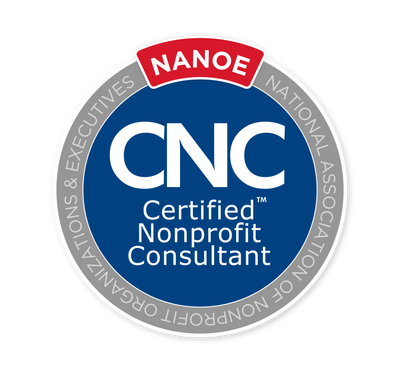WHAT ARE THE COMPONENTS OF STRATEGIC PLANNING?
23Oct
Strategic planning for nonprofit organizations shares many similarities with the strategic planning process for for-profit entities, but it also has some unique components and considerations tailored to the nonprofit sector. Here are the different components of strategic planning for nonprofits:
- Mission Statement:
- Just like in for-profit organizations, nonprofit strategic planning begins with a clear and concise mission statement that defines the organization's purpose and values. Nonprofit mission statements emphasize their social or community-oriented goals.
- Vision Statement:
- Nonprofits create vision statements to outline the desired future state they aim to achieve. This statement should reflect the long-term impact they hope to make in the community or society they serve.
- Values and Culture:
- Identifying the core values that guide the organization's behavior and decision-making. Nonprofit organizations often focus on values like social responsibility, community engagement, and ethical behavior.
- Stakeholder Analysis:
- Understanding the various stakeholders involved, such as donors, volunteers, clients, and community partners. It's important to consider the needs and perspectives of these stakeholders.
- SWOT Analysis:
- Analyzing the nonprofit's strengths, weaknesses, opportunities, and threats, taking into account its unique position and challenges in the nonprofit sector.
- Goals and Objectives:
- Setting specific, measurable, achievable, relevant, and time-bound (SMART) goals and objectives that are aligned with the nonprofit's mission and vision. Nonprofit goals often emphasize social impact and community betterment.
- Strategies and Programs:
- Developing strategies and programs to achieve the defined goals. These strategies are tailored to address social issues and challenges in line with the organization's mission.
- Fundraising and Resource Development:
- Nonprofits need to plan for fundraising and resource allocation. This includes identifying potential funding sources, creating fundraising strategies, and managing donor relationships.
- Volunteer and Human Resource Management:
- Planning for the recruitment, training, and management of volunteers and staff. This is crucial for nonprofits, as they often heavily rely on volunteers to support their operations.
- Impact Assessment and Evaluation:
- Defining key performance indicators (KPIs) and methods for assessing the impact of the organization's programs and services on the community it serves.
- Advocacy and Public Policy:
- If applicable, nonprofits may include advocacy and public policy strategies to influence laws and regulations that impact their mission and the communities they serve.
- Collaboration and Partnerships:
- Identifying opportunities for collaboration with other nonprofits, government agencies, and community organizations to maximize impact and resources.
- Financial Management and Sustainability:
- Ensuring sound financial management to sustain the organization's operations and fulfill its mission over the long term.
- Governance and Board Development:
- Planning for the development and governance of the board of directors, including board recruitment, orientation, and training.
- Communication and Stakeholder Engagement:
- Engaging stakeholders through effective communication and outreach efforts to build support and awareness.
- Risk Management:
- Identifying and managing risks specific to the nonprofit sector, including legal and compliance issues, reputational risks, and financial stability.
- Equity and Inclusivity:
- Addressing issues of equity, diversity, and inclusivity within the organization's structure, culture, and programs.
- Ethical Considerations:
- Nonprofits should consider ethical and transparency issues in their strategic planning process to maintain public trust.
- Review and Adaptation:
- Regularly reviewing and adapting the strategic plan to reflect changes in the nonprofit sector, the community, or the organization's operations.
Strategic planning for nonprofits is essential for achieving their social and community-oriented missions while ensuring the efficient and effective use of resources. It helps nonprofits navigate the unique challenges and opportunities in the nonprofit sector
Comments



